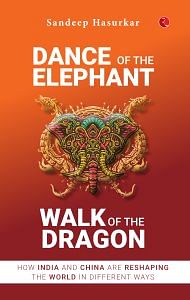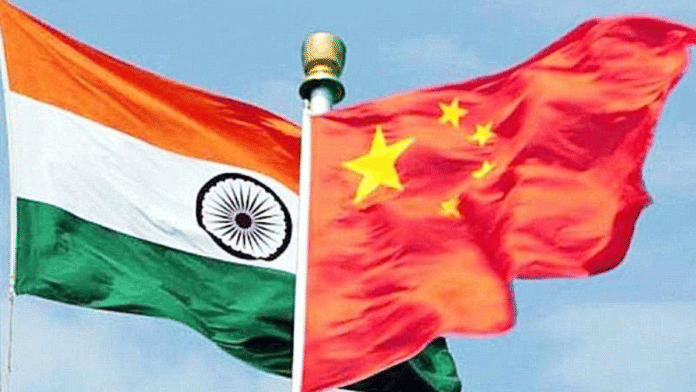This yin-yang of national narratives has unfolded uniquely for each nation over the centuries, shaping their individual, path-dependent trajectories. These narratives have played an important role in forming pieces of the jigsaw puzzle of India and China’s economic stories from 1991 to 2021—shaping events, circumstances, contexts and leadership.
If China’s modern and strict hukou system of residency permits (which restricts the mobility of its population) has its origins in the Qing empire, India’s current land ownership and administration systems have their origins in Raja Todar Mal’s settlement system during the reign of Mughal Emperor Akbar, which were later modified by the colonial British.
Similarly, modern China’s concept of its national boundaries includes Mongolia, Tibet, Manchuria and Xinjiang. However, these territories came under Chinese rule, with varying degrees of administrative or nominal control, only during the late seventeenth century Qing dynasty. In fact, Mao regarded parts of Manchuria and Outer Mongolia—constituents of the then-Soviet Union and the Republic of Mongolia—along with Taiwan, as ‘unfinished business’.
The ongoing Indo-China border dispute that casts a long shadow on their relations, traces its roots to Qing China and British colonial India. The CPC construct of ‘Greater China’ rooted in the maximalist geographical boundaries of the Qing empire, saw the annexation of Xinjiang in 1949 and Tibet in 1950 that were till then largely autonomous regions with intermittent phases of independence.
The minority populations of Xinjiang and Tibet became the primary focus of social cohesion and sinicization under CPC rule. The incorporation of these regions brought CPC-ruled China directly to a shared, ill defined and disputed 3,440 km long border with India. It is a festering and unresolved dispute that led to the Sino-Indian war in 1967, and has seen conflicts and confrontation along the long Himalayan border since.
Also read: China underestimates India-Philippines, treats them as inferior. This has brought them together
In contrast, the Indian concept of Akhand Bharat, or ‘undivided India’ is based on a shared and historical cultural geography of the Indian subcontinent that predates its Islamic invasion and subsequent colonization. However, unlike the CPC, which militarily reclaimed most of China’s Qing Empire boundaries, religious and social differences in India were accentuated under British colonial rule, resulting in the subcontinent’s geographical division along religious lines.
India gained independence from British colonial rule of nearly two centuries on 15 August 1947, after a remarkable peaceful freedom struggle led by Mahatma Gandhi. However, the independence yielded a brutal dismemberment of its cultural identity, social fabric and territories in the form of Partition. A patchwork of 17 British ruled provinces and 562 protectorate states were cajoled and persuaded into the republic Union of India.
China, on the other hand, emerged as a modern nation from the chaos of the World War II in battle, first against the colonizing Japanese and then from the equally brutal Chinese Civil War (1945–1949) between the CPC led by Mao Zedong and the Nationalist Party, Kuomintang, led by Chiang Kai-shek. Under the CPC rule, it became the People’s Republic of China, with Chairman Mao as its unquestioned authoritarian leader.
During their struggle to become modern nation states, both China and India turned towards the West for political frameworks. The CPC was among the first to embrace communism, inspired by the Russian Revolution of 1917. After defeating an authoritarian Kuomintang in an armed civil war struggle, it went on to establish a similar Marxist-Leninist style of authoritarian government.
It was initially guided and assisted by the Soviet Union but it broke up with the Russian communists early on. Under Deng Xiaoping’s leadership, it further adapted its model of ‘communism or socialism with Chinese characteristics’ about a decade before the Soviet Union’s demise.
On the other hand, under the Indian National Congress (INC), its party of national freedom, India added to the institutions of British legacy it already had. The universal adult franchise with electoral representation to the legislature and the separation of powers between the three pillars of the Indian state—the legislature, executive and judiciary—were two defining features of the Western democracy nation state model adopted by India.
It followed the Westminster model of government and Anglo-Saxon law but distinguished itself from the British model by having a written constitution. The umbilical cord of colonial rule, however, was never quite outgrown as evidenced by its continued reliance on Britain for precedents—in its governance, institutions and law—even after decades of independence.
 This excerpt from ‘Dance of the Elephant, Walk of the Dragon: How India and China are reshaping the world in different ways’ by Sandeep Hasurkar has been published with permission from Rupa Publications.
This excerpt from ‘Dance of the Elephant, Walk of the Dragon: How India and China are reshaping the world in different ways’ by Sandeep Hasurkar has been published with permission from Rupa Publications.






